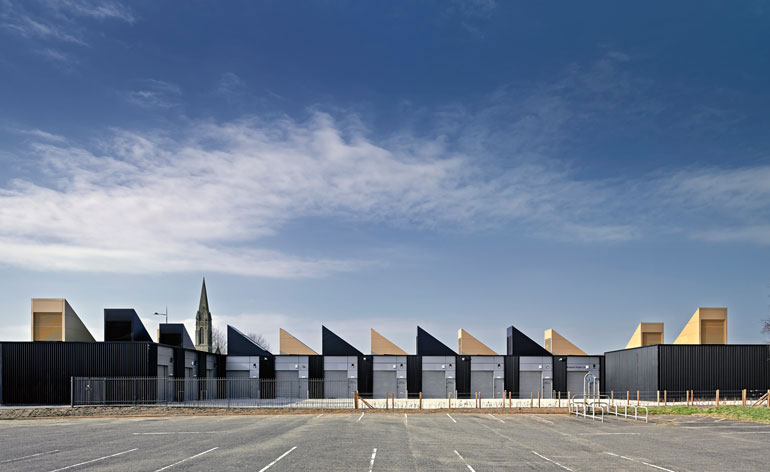Letter from Scotland: we report on the nation’s new architecture icons

As Scotland finds itself on the threshold of deciding its political future, in terms of its architectural present, it seems to be in rude health.
In fact, recent months have seen a slew of built environment milestones, including the unveiling of the new Scottish Crime Campus, which is not only the first built product of the Scottish Government's new architecture policy, but also re-establishes a monumental presence on the former industrial steelworks site of Gartcosh. Similarly, the landscape of Clydebank is undergoing something of boom in new industrial buildings - such as the Clydebank East Workshop - that may reference the forms of great bygone Modernist industrial developments, but are confidently contemporary at the same time.

See the architecture projects reshaping Scotland
The milestone that was the grand entrance of the new Reid Building, designed as a 'complementary contrast' to Charles Rennie Mackintosh's iconic Glasgow School of Art building, may have been tempered by the tragedy of May's fire at the legendary 'Mack', however, hopefully it can also be seen as something of a beacon for the GSA's future as a whole.
Another architectural beacon - the Beacon Arts Centre in Greenock to be precise - has shown that the regional arts in Scotland can still find a forward-looking expression. In similar fashion, in the Bannockburn Battlefield Visitor Centre, the country's history has found its expression in a reflective, intricate and culturally specific brick building; a modern take on Northern Romanticism.
By contrast, the new affordable Wharton Square housing development in Edinburgh's Quartermile looks to European mass housing models and comes up with a solution that's more Northern Futurism. Also on the housing front, though on an altogether smaller scale, many architects are eschewing the easy option of demolition and instead considering city spaces and derelict buildings within the existing urban fabric in developments such as North Gardner Street in Glasgow's West End.
Finally, in a rural context, game changing projects such as Cliff House are demonstrating how the past can not only inspire, but can also help take contemporary vernacular architecture to a whole new level.
Receive our daily digest of inspiration, escapism and design stories from around the world direct to your inbox.
-
 Roland and Karimoku expand their range of handcrafted Kiyola digital pianos
Roland and Karimoku expand their range of handcrafted Kiyola digital pianosThe new Roland KF-20 and KF-25 are the latest exquisitely crafted digital pianos from Roland, fusing traditional furniture-making methods with high-tech sound
-
 Fulham FC’s new Riverside Stand by Populous reshapes the match-day experience and beyond
Fulham FC’s new Riverside Stand by Populous reshapes the match-day experience and beyondPopulous has transformed Fulham FC’s image with a glamorous new stand, part of its mission to create the next generation of entertainment architecture, from London to Rome and Riyadh
-
 A contemporary Mexican hotel emerges from a 16th-century ruin in Mérida
A contemporary Mexican hotel emerges from a 16th-century ruin in MéridaA renovation project by Zeller & Moye, Mérida’s new Hotel Sevilla wears its architectural interventions lightly, mixing new brutalist elements into listed interiors and a palm-filled courtyard